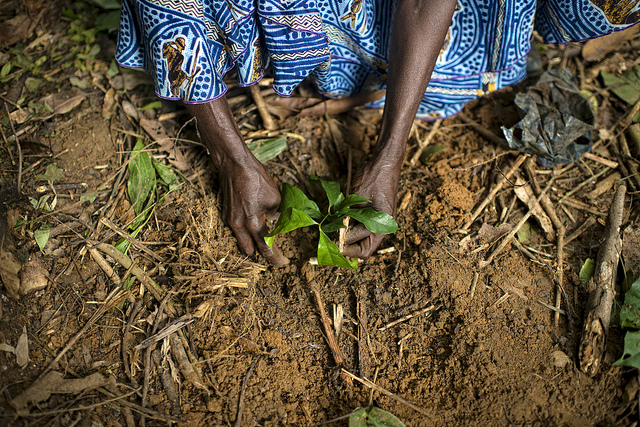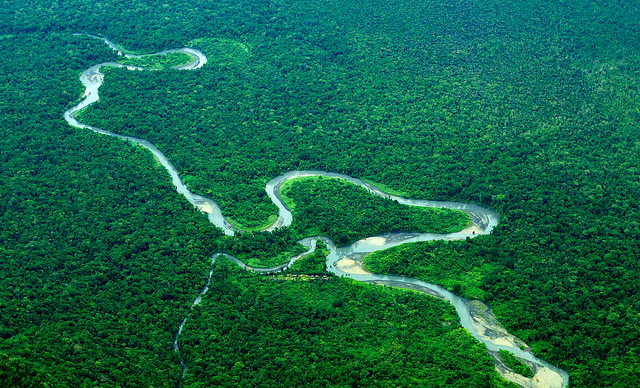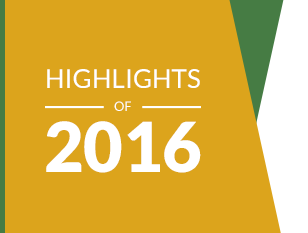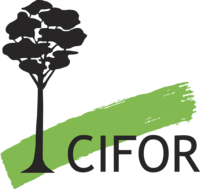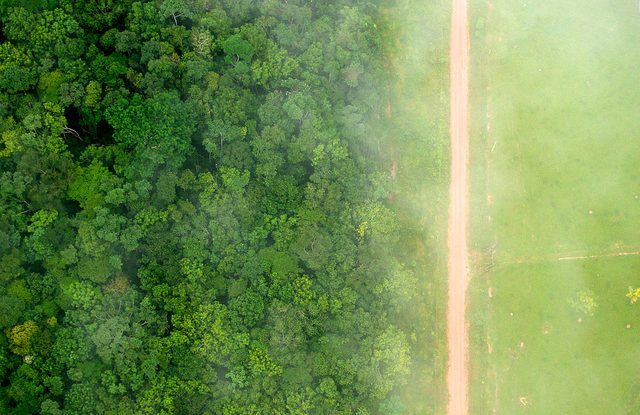
Can you imagine examining samples from every patch of forest cleared over a period of 15 years across an entire continent?
That’s exactly what Veronique De Sy, a scientist at Wageningen University and at the Center for International Forestry Research (CIFOR), did for her latest study by using satellite imagery to quantify the drivers of deforestation for South America between the years of 1990 and 2005.
“It was quite labor-intensive,” said De Sy. “The task of visually confirming every data point of deforestation took me about a year, but I got a really nice result, so it was worth it.”
And a very valuable result – or rather, set of results – too.
Manually checking samples from each 10km by 10km patch of South America’s landmass meant that De Sy could attribute patches of deforestation to specific land-uses. Further, using data divided into two time periods allowed for a perspective on how these processes had changed over time.
This approach enabled De Sy to build up a picture of the drivers of deforestation which is both spatially and temporally explicit, providing welcome detail for policymakers and others looking to understand this fifteen-year period of significant land-use change.
Deforestation drivers in South America
For all the nuances detected by De Sy’s research, the primary driver of deforestation certainly didn’t come as a surprise.
“Pasture is by far the prime driver of deforestation. And this is a particularly South American phenomenon- in Asia and Africa, crop agriculture plays a much bigger role than they do here.”
Pasture accounted for 71.2 percent of South America’s deforestation between 1990 and 2005. In Brazil, where nearly two-thirds of the continent’s deforestation occurred, pasture was the main culprit comprising a whopping 81.8 percent.
“For policymaking, this information is quite important because you can be informed not only of the areas to focus on, but also of the agents responsible for the deforestation.
“For most South American countries, large agri-businesses are the agents of change. And although pasture was clearly dominant, commercial cropping was also highly significant in some countries, like Bolivia and Argentina.
“Only in one country – Peru – was smallholder cropping a dominant driver of forest clearing.”
While many of these relationships were already known from previous research, De Sy’s research has contributed to quantifying them and showing how they changed between 1990-2000 and 2000-2005.
“Between the two time periods covered by the study, we actually see an increase in deforestation. Commercial cropping played a larger role during the latter time period, but it was still a distant second to pasture.”
Measuring carbon losses
Another aspect of De Sy’s research was to allocate a carbon value to each data point of deforestation.
“Not all deforested areas release the same amount of carbon. We distinguished between different forest types by using spatially explicit forest biomass information,” said De Sy.
This level of detail allowed De Sy and her colleagues to better measure the carbon consequences of deforestation depending on where it occurred.
Not all deforested areas release the same amount of carbon. We distinguished between different forest types by using spatially explicit forest biomass information, which helped us to better measure the carbon consequences of deforestation depending on where it occurred.
Overall, the study determines that around 6,460 teragrams, or a million metric tons, was released from South America between 1990 and 2005 due to deforestation. Averaged across 15 years, forest clearing from South America ranks No. 5 on the international list of top annual carbon emitters.
“We know that these were some of the worst years for deforestation in South America, particularly in Brazil,” De Sy said.
From both a carbon and law enforcement perspective, another negative trend De Sy observed was that deforestation in Brazil moved deeper into the Amazon between the two time periods. This necessarily meant that the forests cleared were of higher carbon value.
REDD+ monitoring systems
So how can these new findings be put to use?
De Sy sees a clear value for her data in light of the recent agreement on REDD+ at the Paris climate change negotiations in late 2015.
“This paper can certainly give an indication of a baseline for countries that are setting up their own monitoring systems, including what drivers are important and what policies might be needed,” she said.
“I think it’s important that countries design their own systems and their own ways of figuring out what the relevant drivers are. It all has to fit together, and that has to happen at the national scale.”
Yet there remains a valuable role for the broader-scale monitoring of the type that she and her colleagues have been conducting.
“While the national scale is vital, it is still necessary for the climate change community and the international community to have a kind of an independent overview.
“That can help to identify problems like leakage, for example, and to put pressure on international commodity chains where there are underlying drivers of deforestation.”
The road ahead
De Sy envisions many potential ways to build on this study’s foundation.
“At the moment, what we are focusing on is using the same methodology and expanding the geographical range to Asia and Africa. That way, we can get a pan-tropical perspective on deforestation, while simultaneously understanding the drivers of deforestation at a more localized level.”
According to De Sy, her data set could be paired with a surprising variety of other data sets for a deeper understanding of both deforestation’s causes and its consequences.
“It’s important to note that I only looked at direct drivers – the human activity immediately after the deforestation – but what is also really important to understand are the underlying drivers: the proximity to roads, the commodity prices and so on.
“My data set could be used to link to these underlying drivers, which would add a further layer of understanding.”
Equally, De Sy’s data set could be combined with biodiversity maps or biomass maps, giving insight into the changing consequences of deforestation through time.
“That would mean that if these deforestation hotspots move, you know whether they’re moving into areas where they are going to be more or less destructive for forests, carbon and wildlife.”
Unfortunately, because the underlying data on forest clearance hasn’t been updated since 2005, this study’s methodology can’t be used to show the changes that have taken place over the decade since 2005.
We've shown with this study what can be done, but it comes with a bit of a plea to organizations to invest in these data sets. The uniqueness of this study is in its quantification, spatial explicitness, and the fact that its methodology will eventually be extended pan-tropically. But this is just a piece of the whole deforestation story.
“We’ve shown with this study what can be done, but it comes with a bit of a plea to organizations to invest in these data sets,” she said.
“The uniqueness of this study is in its quantification, as well as its spatial explicitness, and the fact that its methodology will eventually be extended pan-tropically. But this is just a piece of the whole deforestation story.”
We want you to share Forests News content, which is licensed under Creative Commons Attribution-NonCommercial-ShareAlike 4.0 International (CC BY-NC-SA 4.0). This means you are free to redistribute our material for non-commercial purposes. All we ask is that you give Forests News appropriate credit and link to the original Forests News content, indicate if changes were made, and distribute your contributions under the same Creative Commons license. You must notify Forests News if you repost, reprint or reuse our materials by contacting forestsnews@cifor-icraf.org.
